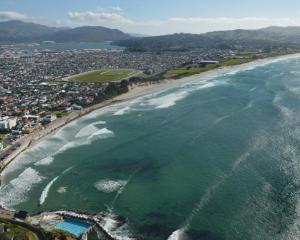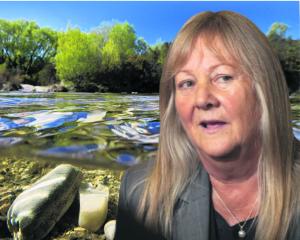Splitting the Waitaki catchment in two under a radical plan to manage water in Canterbury was questioned at a meeting of the Waitaki District Council this week.
The council was discussing the Canterbury Water Management Strategy and setting up a zone committee to oversee water issues in the lower Waitaki catchment below the Waitaki dam.
That committee is expected to be established by the end of the year under the strategy, which was prepared by 10 Canterbury mayors with the support of Environment Canterbury (ECan).
Another zone committee will be set up for the upper Waitaki catchment above the Waitaki dam, but some councillors this week questioned whether the catchment should be managed as one.
The lower Waitaki covers the Waimate district and part of Waitaki district.
The upper Waitaki covers part of Waitaki district and Mackenzie district.
Cr Alistair Mavor said the lower Waitaki zone committee "missed a big chunk" of the Waitaki Plains which was in the Otago Regional Council's area.
The strategy is a new approach to management of water in New Zealand, putting more power into the community's hands.
It has been approved by ECan and the 10 Canterbury district and city councils.
Under it, 10 water-management allocation zones will be established throughout Canterbury, each with its own committee.
The lower Waitaki-coastal zone committee could have eight or more members, comprising representatives from ECan, the Waimate and Waitaki District Councils, Ngai Tahu runanga and four to six appointed members from the community.
They will prepare comprehensive and integrated action plans, measured against the overall strategy.
Above them will be a regional water management committee responsible for regional issues, with zone water-management committees implementing programmes in their areas.
However, Waitaki District Council chief executive Michael Ross said there were advantages to having two zone committees for the Waitaki catchment.
The chairpersons of each committee would sit on the regional committee, giving the catchment two representatives rather than one.
He also said the Waitaki catchment zones had been set on the basis of the Waitaki catchment water allocation regional plan, drawn up by the Government-appointed Waitaki Catchment Water Allocation Board in 2005.
That plan split the catchment at the Waitaki dam because of different issues in terms of water allocation.
"They are two distinctly different areas under the plan," he said.
Zone committees also had to liaise with their neighbours.
Cr Struan Munro, whose Ahuriri ward covers most of the catchment, said two representatives on the regional committee would be an advantage because the area was so large.
He suggested the council seek discussion with the Mackenzie and Waimate District Councils on the formation of the committees before members were appointed.













